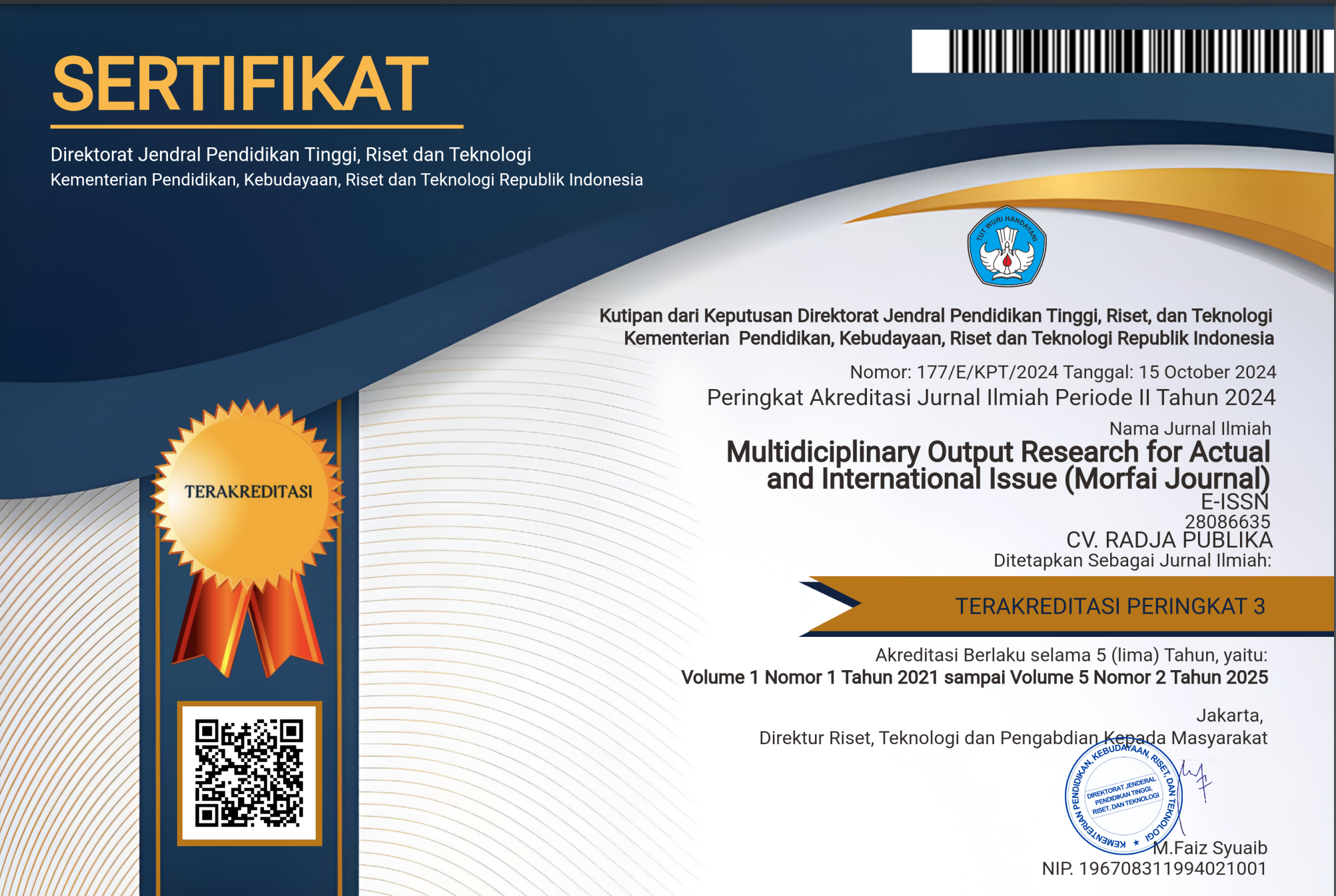STUDY OF THE IMPACT OF TIDAL SAND MINING ON THE WATER QUALITY OF THE KAPUAS RIVER
Main Article Content
U.M. Hapipin
Rossie Wiedya Nusantara
Aji Ali Akbar
This study focuses on the impact of tidal sand mining on the water quality of the Kapuas River. The research methods include laboratory tests for parameters such as Water Temperature, Turbidity, DO, BOD, COD, TSS, pH, and Color, as well as field measurements using equipment such as Current Meters, ropes with weights, Sechhi Disks, air temperature, and GPS to record sampling locations. The results of the analysis showed a significant increase in BOD and COD values at point A9, 200 meters downstream from the mining location, due to suction and overflow of water from pontoon boats. Despite the increase in values, the DO value indicates that the water quality is still good, although not comparable to the increase in BOD and COD. The influence of water discharge is an important factor, where high water discharge, especially at points A7, A8, and A9, results in dilution and decreased concentration of pollutants. Parameter analysis shows a decrease in water quality in spots, indicating a source of pollutants that may be diffuse. However, the average Pollution Index value shows that the water quality meets class III quality standards. Kapuas River water can still be used for fish farming, livestock, agricultural irrigation, and other related purposes. The importance of monitoring and mitigation to minimize the negative impacts of tidal sand mining on water quality and maintain environmental sustainability.
Connel, dan Miller. 1995. Kimia dan Etoksikologi Pencemaran, diterjemahkan oleh Koestoer. Disunting oleh Koestoer. Indonesia University Press.
Etik Yuliastuti. 2011. “Kajian Kualitas Air Sungai Ngringo Karanganyar Dalam Upaya Pengendalian Pencemaran Air.” Semarang: Universitas Diponegoro.
Kementerian Lingkungan Hidup Dan Kehutanan. 2017. “Petunjuk Teknis Restorasi Kualitas Air Sungai.”
“Peraturan Daerah Kabupaten Kubu Raya Nomor 6 Tahun 2014 Tentang Pengelolaan Kualitas Air dan Pengendalian Pencemaran Air.” t.t.
Rido Simbolon. 2019. “Pengembangan Kawasan Wisata di Sungai Kapuas Kota Pontianak,” 1–26.
Usman Ahmad, Tri Wiji Nurani, Etty Riani, dan Ni Wayan Kurniani Karja. 2021. Teknologi, Pengelolaan dan Pelestarian Sumberdaya Alam dalam Perspektif Pembangunan Berkelanjutan. 1 ed. Vol. 1. Bogor: IPB Press.
Widjihatini, Setyawan Warsono Adi, Riza Murti S., Raden Rara Endang Nooryastuti, Iwan Nirawandi, dan dkk. 2021. Statistik Kualitas Air, Udara, dan Tutupan Lahan Tahun 2020. Direktorat Jenderal Pengendalian Pencemaran dan Kerusakan Lingkungan.









